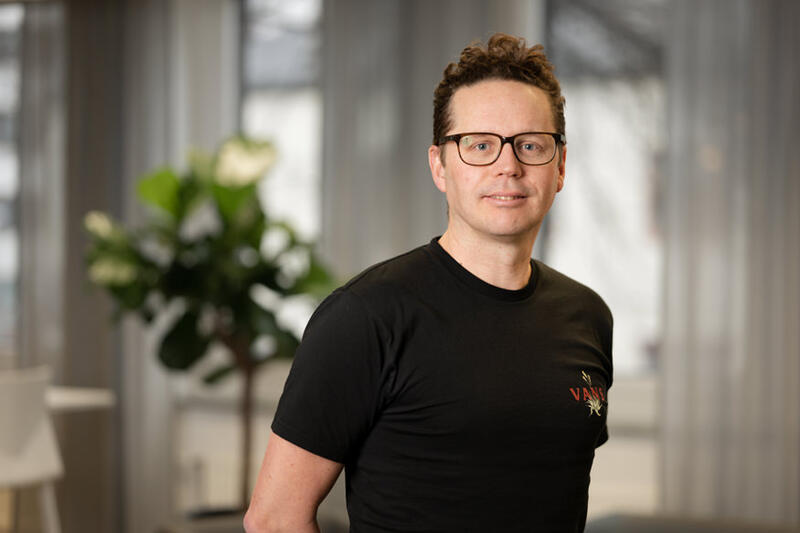Shared data describes the Swedish electrical system in a new way
What will Sweden's future energy system look like? Where will electricity be produced? Where will it be used, and when? The answers to these questions are what Behovskartan ('The needs map') aims to provide.
Thanks to the interactive visualization, new insights about the Swedish energy system will be made possible. By experimenting with variables such as electrification of different sectors and energy consumption the user can explore different scenarios.
Datastory has developed the design and user interface of Behovskartan on behalf of AI Sweden.
The project started as an idea within the Volvo Group as part of the energy transition, where the development of the electrical system is crucial for our operations and simultaneously for the electrification of our products.
Niklas Wahlberg, VP System Solutions and Partnerships at Volvo Group
Since then, the concept has expanded into a national project with around a dozen participants from various sectors. The work is coordinated by AI Sweden.
"Today's debate is dominated by isolated figures and comparisons that are difficult to contextualize. By creating a shared, fact-based view of both production and consumption, we have a better foundation for discussion," explains Niklas Wahlberg.
Behovskartan is an interactive simulation where users can tweak settings related to electricity needs, technological advances, climate changes, and other factors. The goal is to foster an understanding of electricity production and consumption from local to national levels.
A key success factor is having many stakeholders contribute knowledge and/or data about their part of the energy system. The more contributors we have, the greater value it adds to Sweden
Filip Kjellgren, Project leader
Swedish electricity consumption has been stable for decades. But now we're facing something different. The vehicle and transport sector is electrifying rapidly. We see new types of industrial investments in battery factories and fossil-free steel production. Forecasts indicate a need that might double or even triple soon.
"The solution for Sweden's energy supply isn't just building more of what we have; we need new approaches. One aim of this project is to generate insights and build acceptance for necessary changes. Given how technology in the energy field is evolving right now, it's important that investments are made correctly and in technologies that have a future," says Filip Kjellgren.
For Sweden to manage this transition requires an understanding of its electrical system – where today's power needs lie, where electricity is produced today, where it could be produced tomorrow, and how power requirements will change.
"The challenge lies in the fact that currently these answers are scattered across many stakeholders, if they even exist," continues Filip Kjellgren: "For example, consider our grid companies: 170 separate entities each with a monopoly on their local market. Each knows its geographical area with models and forecasts. Our ambition, with funding from Vinnova and Västra Götalandsregionen, is to create both local and national overviews."
In its first year, the project focuses on power needs – visualizing where and how electricity is consumed across Sweden. Subsequently, aspects like production flexibility and storage will be incorporated into this visualization journey. Alongside this process, artificial intelligence will be utilized for creating models and forecasting tools.
"One thing we can see is that future systems must be resilient. Having more power generation close to consumption points makes us less vulnerable when it comes to weather or other types of crises or conflicts. To achieve this goal requires a more flexible electrical system where large consumers adjust based on current data – and here data and AI play pivotal roles," adds Filip Kjellgren: "However, this tool can only be as good as the information it's built upon; therefore we hope many stakeholders will share their data contributing towards collective benefit."
Göteborg Energi joins as another partner in this initiative with Ulf Hagman, Head of Strategy & Innovation:
Electrification – which stands as our most crucial solution for the industry’s societal transition – is something we simply cannot afford to fail at. We regard it as an issue with both local and national significance. Tools and platforms facilitating a common overview and understanding must emerge for effective coordination going forward. Hence our engagement in this initiative.
Ulf Hagman, Head of Strategy & Innovation at Göteborg Energi
Project participants include Volvo Group, LKAB, SSAB, Hitachi Energy, Göteborg Energi, Energiföretagen Sverige, LTU Business along with contributions from Boliden, Vattenfall, Lidköping Environment & Technology, Power Circle, SKGS, Energiforsk, and Chalmers providing data/knowledge support.
The project is financed by Vinnova and Västra Götalandsregionen.
"If together we successfully pivot Sweden’s energy system accordingly we lay down a radically improved foundation for Swedish welfare and competitive edge, but such discourse shouldn't revolve around just one wind turbine. We need commitment toward how our entire energy system could/should evolve – much like roads accepted infrastructure necessity so too should our energy systems," concludes Filip Kjellgren.
Please reach out if you wish to participate – either by using Behovskartan or by helping to improve it further!
We're seeking:
- Stakeholders with knowledge about future electric power requirements
- Knowledgeable parties regarding national/international models that are worth considering
- Potential collaboration partners
About Behovskartan
Behovskartan serves as a visualization platform allowing users to play with various variables affecting electricity consumption – that includes both power (kW) and energy (kWh) demands.
The initiative was conceived during the fall of 2022 by AI Sweden together with several industrial/public actors acknowledging a national need for neutral/modern tools fostering discussions around society's impending power demands.
The comprehensive societal transformation unfolding globally to replace fossil fuels with carbon-neutral alternatives is driving massive changes within electrical systems. New production and consumption patterns increases need for flexibility and storage capabilities. This is all happening locally across different regions in Sweden which means we need a tool for observing both nationwide and being able to zoom in to smaller segments when necessary.
Get AI Sweden's Energy Initiative Updates!
For more information, contact


